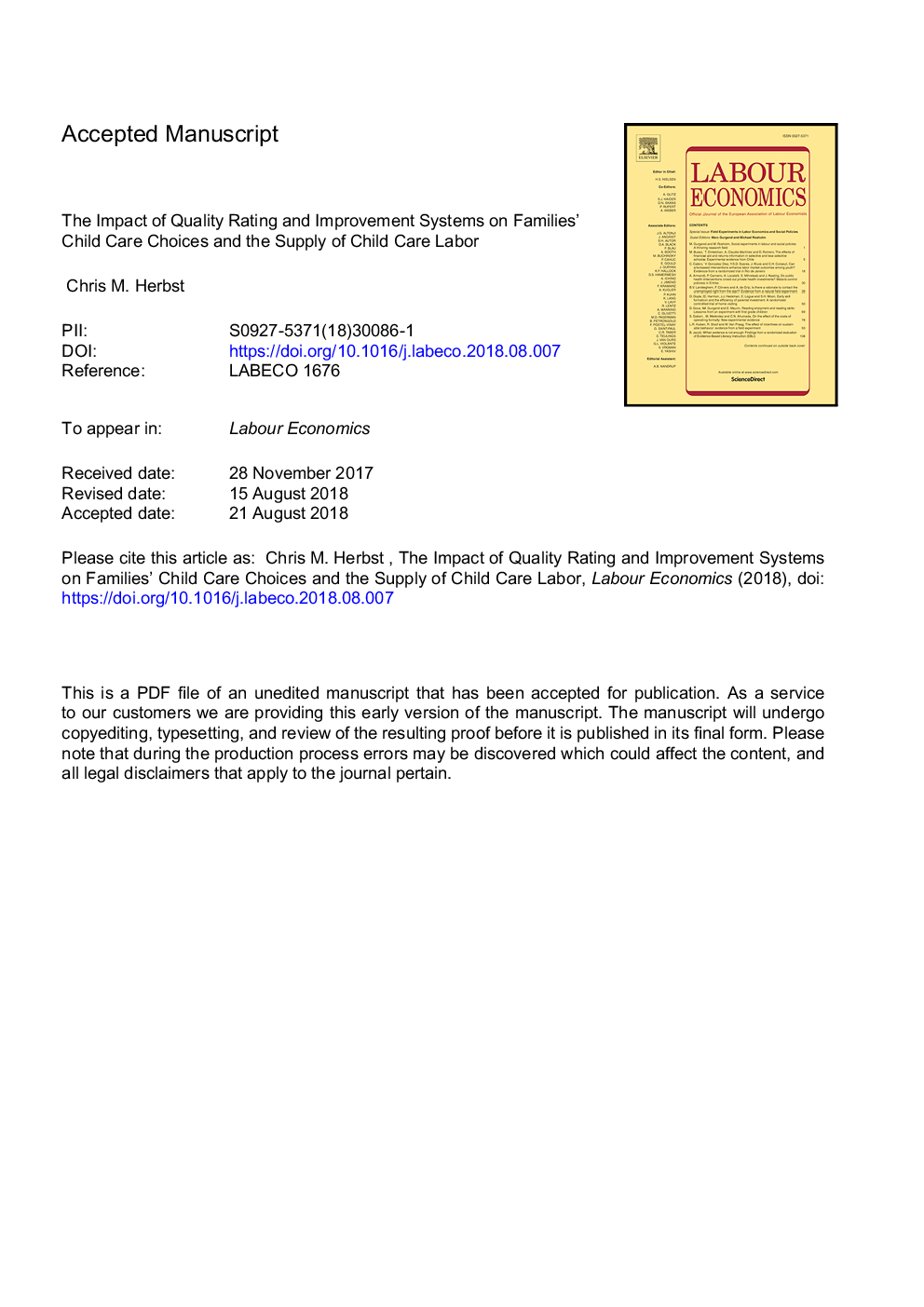| Article ID | Journal | Published Year | Pages | File Type |
|---|---|---|---|---|
| 9953067 | Labour Economics | 2018 | 55 Pages |
Abstract
Quality Rating and Improvement Systems (QRIS) are increasingly deployed by U.S. states to monitor and improve the quality of non-parental child care settings. By making information on program quality accessible to the public, QRIS attempts to alter parental preferences for quality-related attributes and encourage competition between providers. This paper draws on a variety of datasets to empirically characterize the way in which families and providers respond to the enactment of QRIS. Specifically, it exploits the differential timing in states' QRIS roll-out to examine two sets of outcomes: (i) families' child care choices and maternal employment and (ii) the supply and compensation of child care labor. Estimates from difference-in-differences models reveal several noteworthy findings. First, although QRIS induces families to shift from parental to non-parental care, economically disadvantaged families are more likely to use informal care, while their advantaged counterparts are more likely to use formal care. Second, QRIS increases the supply of high-skilled labor, particularly within the center-based sector. Third, all but the most highly-skilled child care workers experience rising compensation levels but also greater turnover. Finally, states that administer a wage compensation program alongside their QRIS experience larger increases in child care supply and compensation as well as lower turnover rates than states operating a QRIS in isolation.
Keywords
Related Topics
Social Sciences and Humanities
Economics, Econometrics and Finance
Economics and Econometrics
Authors
Chris M. Herbst,
